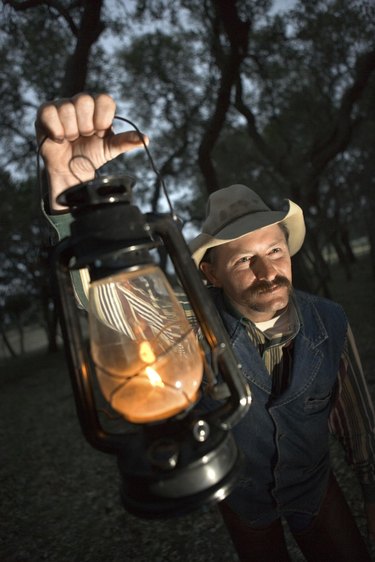Things You'll Need
Kerosene
Oil lamp
Powdered food dye

In its natural state, kerosene is clear, with a slight yellowish tone. On store shelves, you'll find clear kerosene, along with red and blue kerosene. Small quantities of red kerosene can also appear pink. Kerosene is dyed to indicate the fuel's low-tax or tax-exempt status. This is required in many nations, including the U.S. Clear kerosene is more expensive, as it is in a higher tax bracket. The clear fuel is intended for use in industry, whereas the dyed kerosene is intended for decorative or home use. Use a small amount of powdered dye to alter the color of kerosene for decorative purposes.
Step 1
Pour the kerosene into the oil lamp's fuel tank.
Video of the Day
Step 2
Add a pinch of powdered food coloring to the kerosene. Add blue coloring to red kerosene to get purple. Add yellow to red lamp oil to get orange. Add red dye to blue kerosene to get purple. Add yellow dye to blue kerosene to get green.
Step 3
Slosh the lamp oil using a circular motion to dissolve and distribute the dye throughout the kerosene.
Tip
Do not use liquid food coloring. The liquid food coloring is suspended in water. The water will not mix with the kerosene. Signs of spoiled kerosene include a yellow color, cloudiness and particles floating in the liquid.
Warning
Do not dye the kerosene while it's in the storage container. Dyeing it can make it difficult to determine if the kerosene has spoiled. Store kerosene in a container designed specifically for kerosene storage. Kerosene is flammable. Use caution when handling kerosene and avoid exposure to heat or sparks. Do not smoke while handling kerosene.
Video of the Day